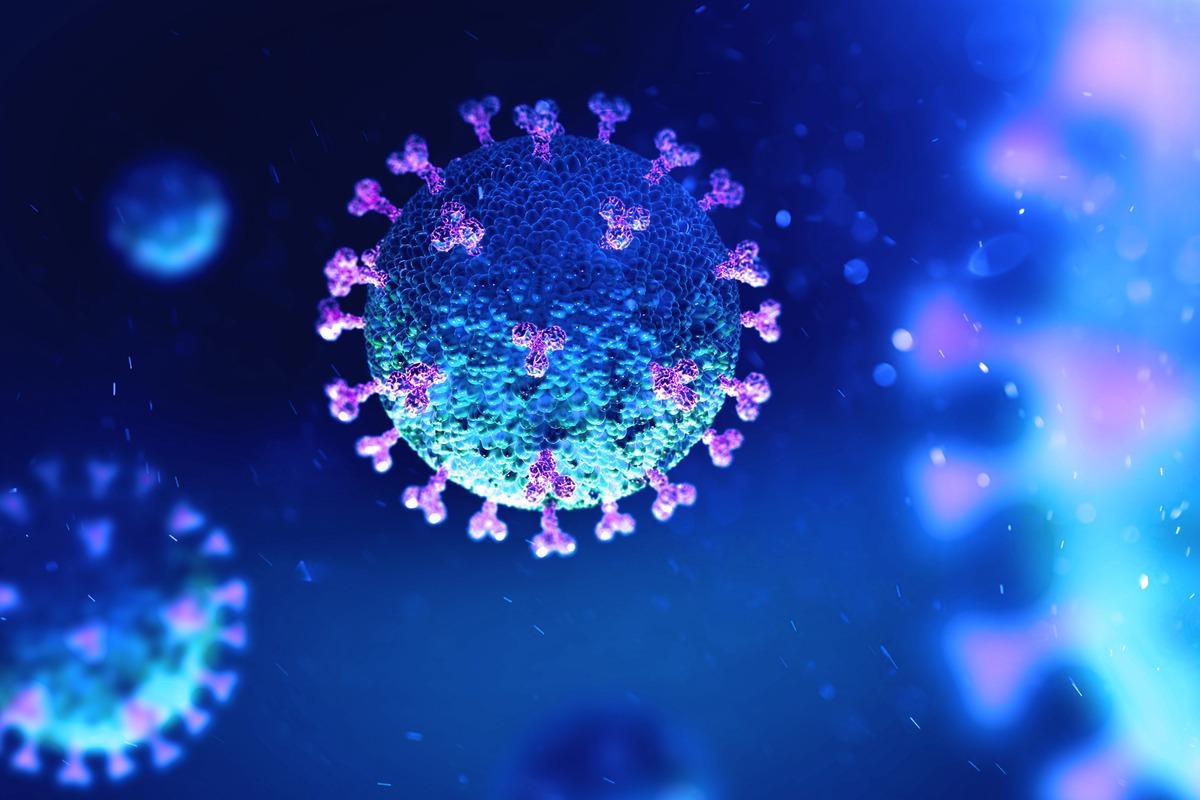In a recent study posted to the bioRxiv* pre-print server, a team of researchers investigated P323L in RNA polymerase (NSP12) and D614G in the spike (S) protein of severe acute respiratory syndrome coronavirus 2 (SARS-CoV-2) to understand the selection pressure at these two mutation sites.
 Study: Rapid selection of P323L in the SARS-CoV-2 polymerase (NSP12) in humans and non-human primate models and confers a large plaque phenotype. Image Credit: Andrii Vodolazhskyi/Shutterstock
Study: Rapid selection of P323L in the SARS-CoV-2 polymerase (NSP12) in humans and non-human primate models and confers a large plaque phenotype. Image Credit: Andrii Vodolazhskyi/Shutterstock
NSP12, an RNA-dependent RNA polymerase complex, is composed of both viral and host cell proteins. The mechanism behind the selection pressure acting on the P323L mutation in humans and non-human primate animal models is unknown. The authors speculated that the P323L mutation in the NSP12 polymerase complex alters interactions with the host cell proteome, thus facilitating SARS-CoV-2 replication. Therefore, they cultured viruses in cell lines from the original host species speculating this might drive the selection, providing a mechanism to identify candidates for the original zoonotic event(s).
The SARS-CoV-2 with D614G S mutation was first identified in February 2020, and by May 2020, ~80% of sequenced viruses contained this mutation. The SARS-CoV-2 Pango lineage B.1 and sub-lineages containing the D614G mutation also had potentially linked mutations, including C14407U in NSP12 that conferred a P323L mutation. However, A.19 and A.2.4 lineages had the D614G mutation but not the P323L mutation. Therefore, it is not entirely clear whether the P323L mutation in NSP12 confers a fitness advantage and is subject to selection pressure.
The study
In the present study, samples from coronavirus disease 2019 (COVID-19) patients were sequenced to analyze both the dominant viral genome sequence and minor variant genomes before and during the occurrences of D614G/P323L mutations in the UK to understand the dynamics of the within-host selection pressure for the P323L variant.
The researchers analyzed the SARS-CoV-2 population in humans when the two mutations became part of the dominant viral genome sequence. In addition, a lineage B SARS-CoV-2 with 323L and 614G in the minor variant population was studied in two non-human primates – cynomolgus (Macaca fascicularis) and rhesus (Macaca mulatta) macaques to review the mild COVID-19 observed in most humans.
Longitudinal sampling indicated that while the 323L mutation became part of the dominant viral genome sequence, 614G could not. Reverse genetic analysis of the P323L variant with a 614G mutation revealed that the P323L variant grew with a larger plaque phenotype providing a selective advantage to the D614G mutation in the S protein. Overall, this indicated that an emerging dominant sequence (and a new variant) could be predicted by an analysis of minor variant genomes.
Results
The analysis based on the study model suggested rapid selection of P323L in NSP12 and D614G in the spike protein within humans. Infection with a SARS-CoV-2 variant having a mutation in the minor variant genome under the selection pressure would have seen an increased proportion of this genome as the infection progresses until the minor variant genome became the dominant viral genome. However, this would not have happened if transmission occurred early during the infection. Under strong selection pressure, the viral population being transmitted would have mutated as part of the dominant viral genome which would have persisted during further infections. In addition, due to the founder effect, there might have been the sudden emergence of a mutation in the dominant genome sequence.
In the primate model, the SARS-CoV-2 variant used for infection was an isolate close to the original Wuhan strain which had the P323 mutation in NSP12 and the D614 mutation in the S protein of the dominant consensus sequence. At the minor variant genome level, the frequency of 323L in NSP12 was 0.03%, and that of 614G was 0.02%. The sequence analysis also indicated that some animals showed a dominant viral genome sequence containing 323L in NSP12, but not necessarily 614G in the spike protein.
Recombinant viruses that differed at codon 323 in NSP12 with the D614G mutation in the S grew with a smaller plaque morphology than a version with only 323L mutation in NSP12. Other determinants of plaque size are in vitro growth rate, evasion of antiviral responses, and cell to cell fusion.
Conclusions
The study findings suggest that, in some cases, tracking the distribution and frequency of SARS-CoV-2 minor variant genomes at a population level would help in predicting the emergence of a new dominant viral genome sequence. When combined with intensive computations requiring higher quality samples and sequencing data, researchers may also be able to predict a newly emerging SARS-CoV-2 variant quickly. It may also aid in the rapid evaluation of medical countermeasures and non-pharmaceutical interventions against these variants globally.
*Important notice
bioRxiv publishes preliminary scientific reports that are not peer-reviewed and, therefore, should not be regarded as conclusive, guide clinical practice/health-related behavior, or treated as established information.
- Xiaofeng Dong, et al. (2021). Rapid selection of P323L in the SARS-CoV-2 polymerase (NSP12) in humans and non-human primate models and confers a large plaque phenotype. bioRxiv. doi: https://doi.org/10.1101/2021.12.23.474030 https://www.biorxiv.org/content/10.1101/2021.12.23.474030v1
Posted in: Medical Research News | Medical Condition News | Disease/Infection News
Tags: Cell, Codon, Coronavirus, Coronavirus Disease COVID-19, Frequency, Genetic, Genome, in vitro, Morphology, Mutation, Phenotype, Polymerase, Protein, Proteome, Respiratory, RNA, SARS, SARS-CoV-2, Severe Acute Respiratory, Severe Acute Respiratory Syndrome, Spike Protein, Syndrome

Written by
Neha Mathur
Neha Mathur has a Master’s degree in Biotechnology and extensive experience in digital marketing. She is passionate about reading and music. When she is not working, Neha likes to cook and travel.
Source: Read Full Article
